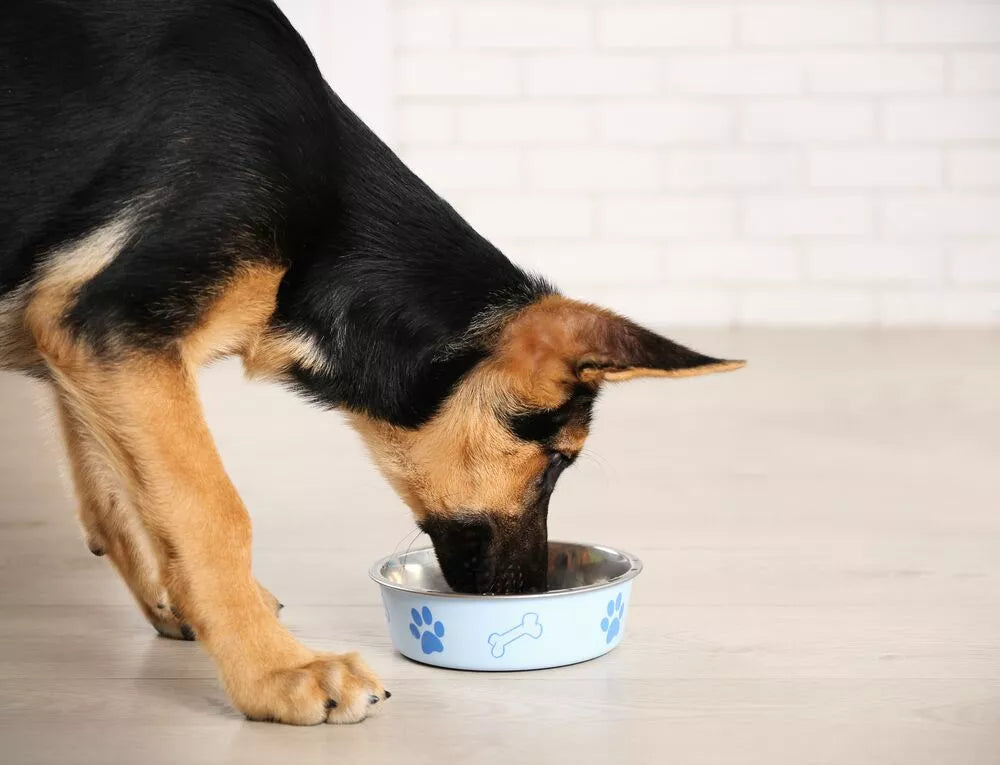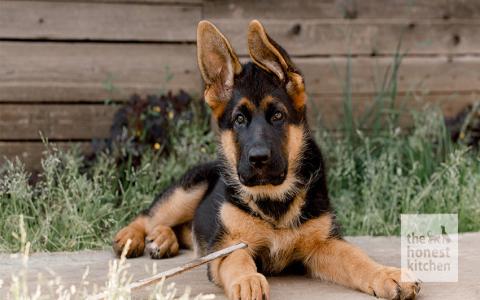Getting Started with My GSD Pup
Okay, so I brought my German Shepherd pup, let’s call him Rex, home. Cute little furball, right? Full of energy, tripping over his own paws. But then came the big question that hits you pretty quick: food. How much does this little guy actually need to eat? I remember staring at him and then at the food bag, feeling kinda clueless, honestly. You want to do it right, you know?
First Steps and Bag Guidance
First thing I did, like probably everyone, was check the giant bag of puppy chow the breeder recommended. Found that feeding chart on the back. You know the one – it gives you ranges, like ‘X cups for Y weight at Z age’. Seemed straightforward enough at first glance. But then you think, well, is my pup average? Is he super active or more of a couch potato already? It felt… well, a bit vague. Every pup’s different, right? That chart felt like a guess at best.

So, I just had to start somewhere. I picked an amount right in the middle of the suggested range for his age and what I guessed his weight was. Measured it out pretty carefully with a proper measuring cup, didn’t want to mess it up. And split it up, too. Little pups have tiny stomachs and need feeding more often. I went for three meals a day back then – morning, midday, evening. Seemed manageable.
Watching and Adjusting – The Real Work
This is where the real work actually started, the day-to-day stuff. It wasn’t just about scooping food into a bowl three times a day. Nope. I quickly realized I had to become a bit of a detective. I started watching Rex like a hawk, looking for clues.
- Energy Levels: Was he bouncing off the walls constantly, like super hyper? Or was he kinda sluggish and sleeping all the time? I was looking for that happy medium – playful and active, but also able to settle down. Took a bit to figure out if zoomies were just puppy stuff or maybe too many calories.
- Poop Patrol: Yeah, glamorous, I know. But seriously, this became a huge indicator for me. You gotta check the poop! Were his poops firm and, you know, log-shaped? Or were they consistently soft, maybe even runny? Found out pretty quick that soft, messy poops often meant I was giving him a bit too much food, or maybe the increase was too sudden. Had to dial it back slightly when that happened and see if things firmed up.
- The Rib Check: This was a big one somebody told me about, and it really helped. Gently run your hands along your pup’s sides. Can you feel the ribs easily under a thin layer of fat, but not see them sticking out like crazy? That’s kind of the goal. If I couldn’t feel his ribs easily, I figured I might be overdoing the food. If they felt super sharp and prominent, I worried maybe he wasn’t getting quite enough. Took a bit of practice to get the feel for what ‘just right’ felt like on him.
Found myself tweaking the amount pretty regularly, especially in those first few months. They have crazy growth spurts! He’d suddenly seem way hungrier, or his poop would change, or he’d look a bit thin or a bit chunky, and I’d adjust his portions. Didn’t make huge changes all at once, usually just added or removed maybe 1/4 cup per day, something small like that, and watched for a few days.
Finding Our Rhythm
After a few weeks, maybe a month or two, of this constant watching and tweaking, we kind of settled into a better rhythm. I got much better at just looking at him – his energy, his coat, his body shape – and knowing if we were on the right track. And yes, still kept an eye on the poop situation! Started weighing him regularly too, maybe once a week, using the bathroom scale (weigh myself, then weigh myself holding him). Just wanted to see that steady upward curve on the growth chart, not too fast, not too slow. Heard that growing GSDs too fast can be bad for their joints, so I was mindful of that.
So yeah, the takeaway for me was there’s no single magic number for how much a German Shepherd puppy should eat. The food bag gives you a starting point, a ballpark figure. But you really gotta watch your own dog. Pay attention to all those little signs. Be prepared to adjust things based on your puppy. It felt more like an ongoing experiment than following a strict recipe sometimes, just figuring out what my specific pup needed as he grew like a weed. Took some trial and error, a bit of worry, but eventually, we got there, and he grew up strong and healthy.






